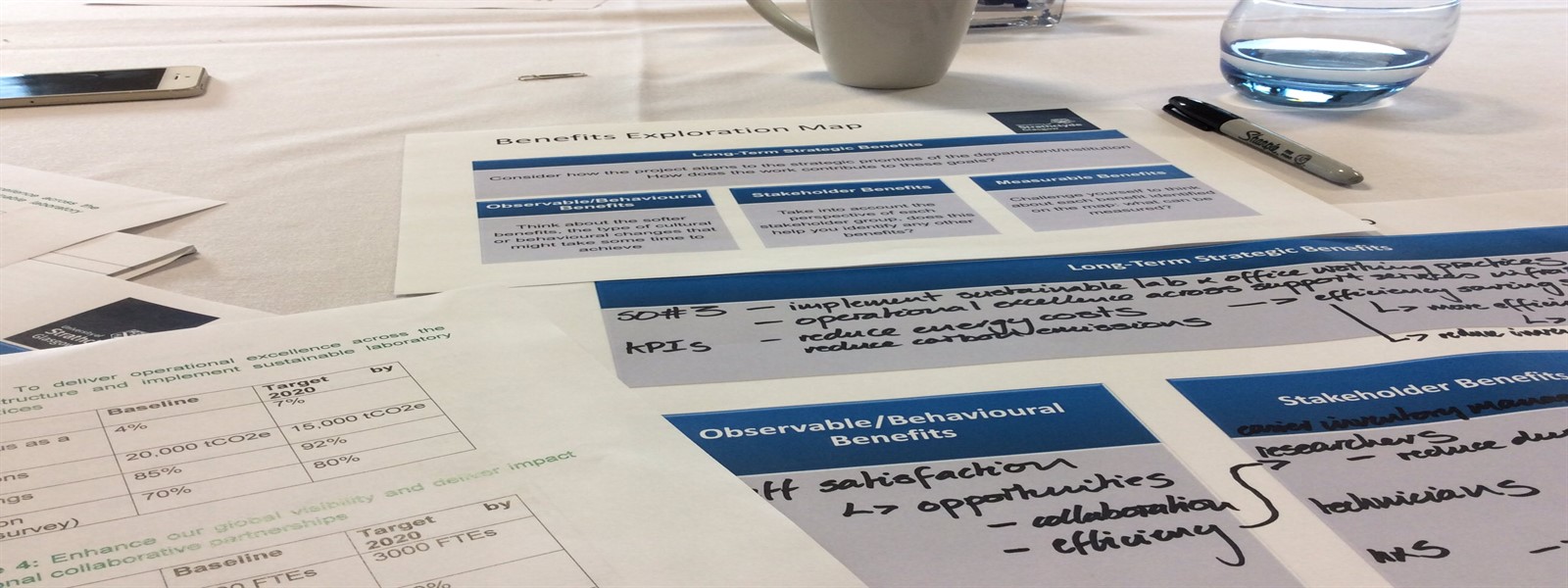In my last blog I highlighted the importance of identifying the “critical few” and doing these very well.
But how do we do this? It’s very easy to try and do everything. There are so many different projects we could embark on at any given time. There can often be a temptation, or indeed pressure, to do them all. Everything is a priority. Does this sound familiar? One of the dangers of this approach is that we end up doing everything (at best) averagely. Wouldn’t it be better if we concentrated on the “critical few” projects and delivered these extremely well, with significant (and evidenced) impact for the organisation?
One method we use to prioritise our projects is through using a tool called a Benefits Exploration Map. This is included within our sector leading guide and online toolkit “Evidencing the Benefits of Change in Higher Education”, which was launched in January 2017.
The Benefits Exploration Map is a tool that helps us identify the strategic; observable/behavioural; stakeholder; and measurable benefits for any potential project.
Once we have completed this structured and methodical exercise (involving key stakeholders) for a group of potential projects, we are able to identify which of those projects has the biggest potential organisational strategic impact at this time.
The Benefits Exploration Map also helps to clarify what success looks like and how we will know whether it has been a success or not. Far too often projects are surrounded by ambiguity from the outset. Yet projects such as this are often still considered to have delivered successful outcomes. How can this be? Perhaps this is because “the project launched with ambiguous purpose leaves the project manager free to interpret results to his/her advantage”. [MARTIN, K (2018) - Clarity First: How Smart Leaders and Organizations Achieve Outstanding Performance]
The tool can help to provide clarity of purpose for every project, which can, in turn, help us identify and agree on a prioritised portfolio of projects, with a clear rationale for why these projects were chosen ahead of others.
Establishing clarity of purpose at this early stage and using this systematic approach will also help Project Sponsors and/or Project Boards determine whether or not a project has been delivered successfully; through comparing apples with apples, rather than apples with oranges.
Please get in touch if you would like further information on Evidencing the Benefits of Change in Higher Education and our systematic approach to project prioritisation and benefits management.


